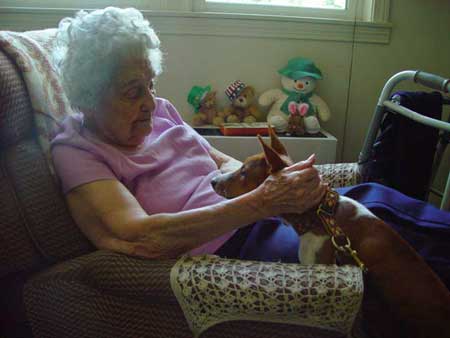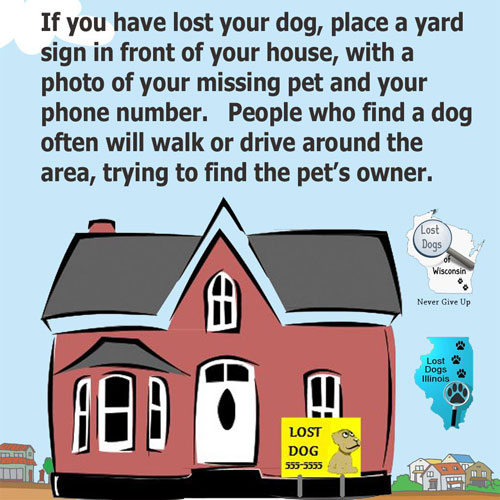Page 15 < previous page > <next page>
SOME HEALTH & SCIENCE NEWS 2
|
FYI on MRSA from Therapy Dogs International
ATTENTION TDI MEMBERS: A Word on MRSA We are re-sending this information to you, since we just learned that two of our TDI dogs had contracted MRSA two years ago. After speaking with hospital representatives they assured me that it could not have been contracted in their hospital. Anyway, there is no way we can trace it, especially since so much time has elapsed. By the way, both dogs are fine after some extensive treatment with antibiotics. A number of TDI Members and facilities have become concerned about the possible transmission of MRSA (Methicillin-resistant Staphylococcus aureus) from therapy dogs or to therapy dogs visiting Health Care Facilities, schools, or other institutions. We have consulted various sources in the Veterinary community, and the one thing that they can all agree on is that MRSA in dogs is not well understood at this point. What we do know is MRSA is a drug resistant infection that does not respond to normal treatment. It may be possible for MRSA to be passed from a dog to a human, and vice versa, but luckily, Staphylococcus bacteria are usually not hazardous to most humans or dogs, because healthy individuals of both species can usually fight the bacteria without medication or other help. If MRSA does affect you or your pet, the fact that the infection is unresponsive to drugs makes it difficult to treat. Some symptoms of MRSA include soft tissue infections and respiratory problems in humans, and a skin infection in dogs. If you or your dog display these symptoms, it would be wise to consult a doctor or your veterinarian promptly. The best way to combat MRSA is proper hygiene for both you and your dog. You should wash your hands before and after leaving a facility, and keep your dog clean and well-groomed. In addition, when in a health care facility, use a towel or blanket provided by the facility to cover the bed or lap of the patient if your dog goes up on the patient’s bed or lap. Also, a quick review of TDI’s sanitary practices outlined in the Associate Member’s Rules and Regulations (Page 6) and “Grooming Your Therapy Dog for Visitations” (Page 15) is a good idea. Another resource you can utilize is your State Department of Health, and you may also consult the NASPHV (National Association of State Public Health Veterinarians) “Animals in Public Setting” Compendium. It is If you keep yourself and your TDI dog as clean and hygienic as possible, you will minimize the chance of you or your dog acquiring or transmitting MRSA bacteria to or from those you visit. This is another article on MRSA that one of our members sent to us. This seems to be the best article so far. https://www.avma.org/public/PetCare/Pages/MRSA-FAQs.aspx And here is one more article on MRSA that one of our members sent to us. http://www.petmd.com/dog/conditions/skin/c_dg_antibiotic_resistant_infections_mrsa%20?page=show Best Regards,
|
|
Implantable Microchip for Pets with GPS Tracking - Patent Filed by Escape Alert, LLC. Escape Alert, LLC filed international patents for an implantable GPS microchip for pets which will alert owners if their pet has escaped and enable them to track their pet’s exact location using GPS from an implanted microchip in the pet’s body. This is the first implantable microchip with GPS. Escape Alert, LLC. This is a game-changer for lost pets which will make losing a pet a thing of the past. Los Angeles, CA (PRWEB) September 17, 2014 Escape Alert, LLC. filed international patents for an implantable GPS microchip for pets which will alert owners if their pet has escaped and enable them to track their pet’s exact location using GPS from an implanted microchip in the pet’s body. This is the first implantable microchip with GPS. While implantable microchips for pets have been around for many years, they are passive until read by scanners, do not have GPS, and are not able to track a pet’s location or alert the owner that the pet has escaped. Escape Alert’s GPS microchip will not only alert pet owners if their pet gets out while they are away, but it will allow them to initiate GPS tracking of the pet’s exact location. Because the technology is permanently implanted in the animal’s body, Escape Alert’s GPS Microchip solves the typical problems associated with bulky GPS collars which are too heavy for many pets and is more reliable because it never needs recharging. “This is a game-changer for lost pets which will make losing a pet a thing of the past,” says Wayne Norris, Co-Founder and CEO. The chip will be self-powered by revolutionary technology called a piezo-electrical nanogenerator, which basically creates power from mechanical movement such as walking or moving your arms. Recently, researchers have been able to self-power cardiac pacemakers thereby eliminating the need for surgery to replace the battery. “We have been working on this GPS microchip for years, but the trick was how to power the battery of an implanted device. The technology just wasn’t there, until now. Piezo-electrical nanogerator technology is the wave of the future and may put an end to batteries as we know them. It’s the next big thing since the computer revolution” says Norris. This revolutionary microchip for pets is one of the first examples of a commercialized product using piezo-electrical nanogenerators to power the battery. According to the American Pet Products Association (APPA), 67% of microchipped pet owners falsely believe that the microchips inside their pets can track the pet’s location if needed. They cannot. Additionally, according to the APPA 2010 National Pet Owner Survey, over 50% of microchipped pets have outdated information for the owner.
Lost pet statistics are staggering. 1 in 3 pets will be lost during their lifetime according to the National Humane Society and of those lost pets, only 1 in 10 will ever be found. According to the ASPCA roughly 3.9 million dogs and 3.4 million cats enter shelters in the United States each year and 31% of dogs (1,200,000) and 34% of cats (1,150,000) are euthanized. Escape Alert’s revolutionary technology will make lost pets a thing of the past, save millions of animal lives and save counties and municipalities millions of dollars spent to house, feed and eventually kill these wonderful companion animals. Initial production runs will be limited. The implantable GPS microchips can be pre-ordered beginning Sept 23, 2014 on Kickstarter. |

 Fern & Henriette
Fern & Henriette